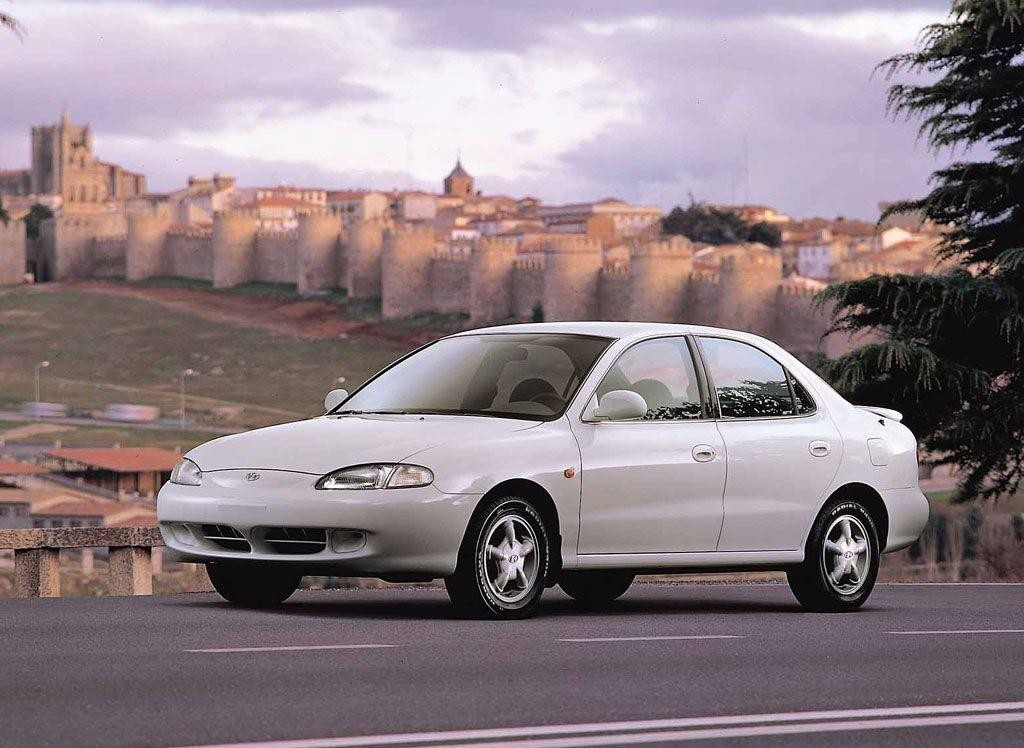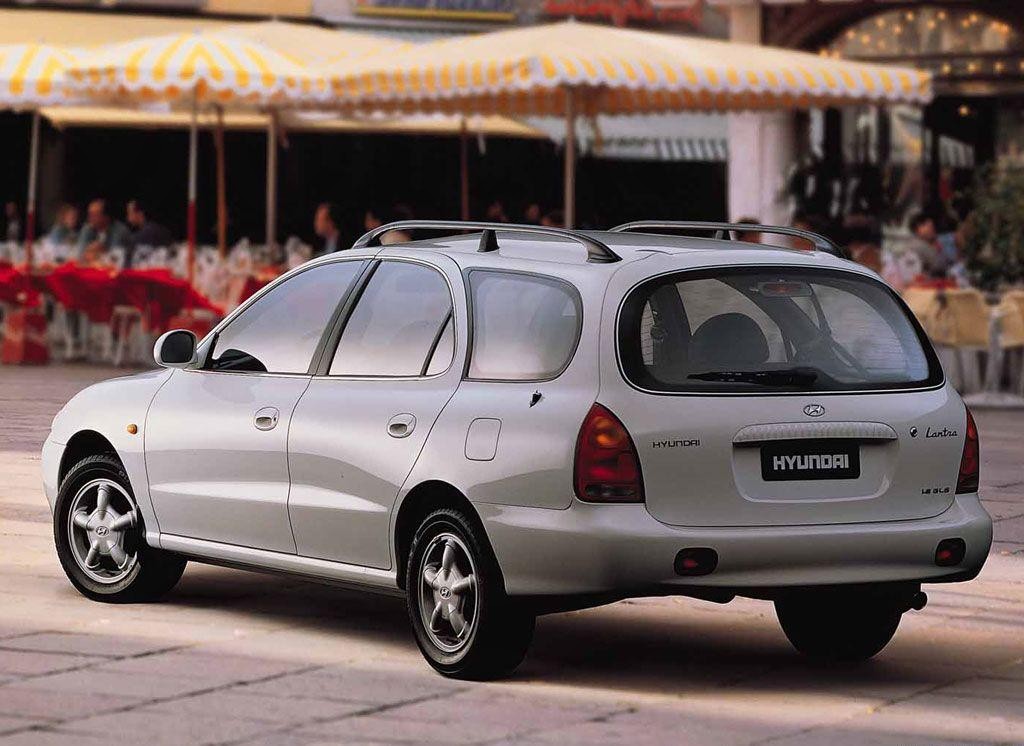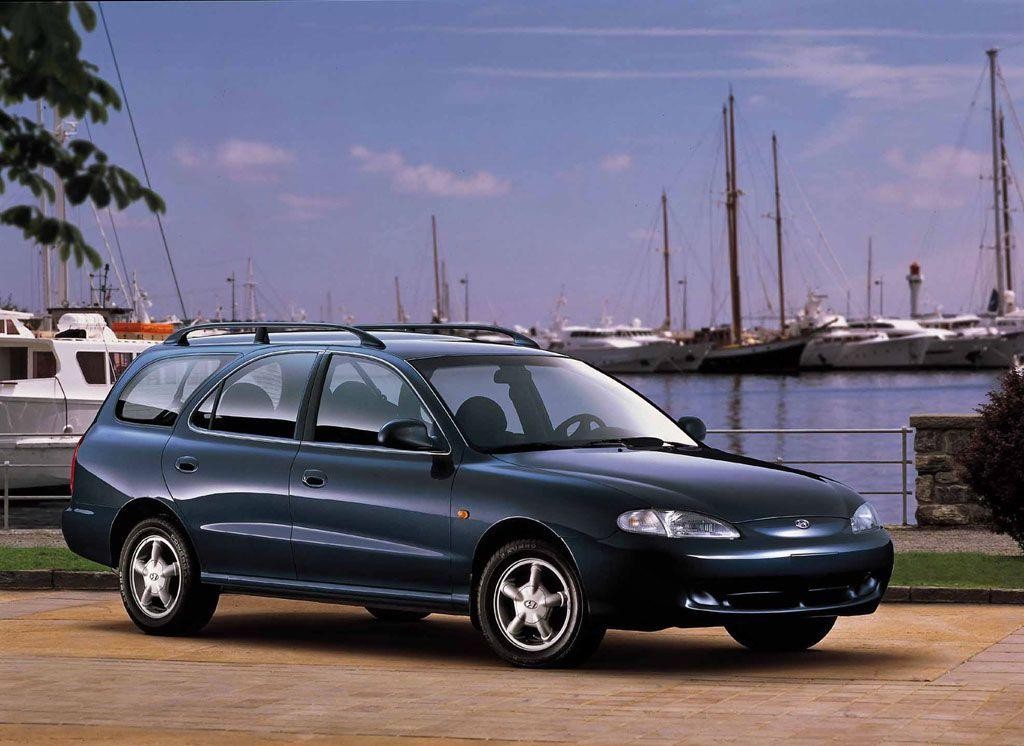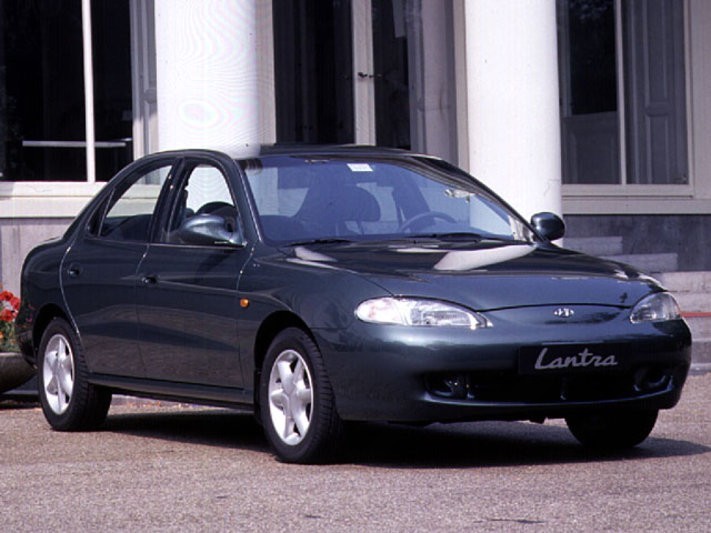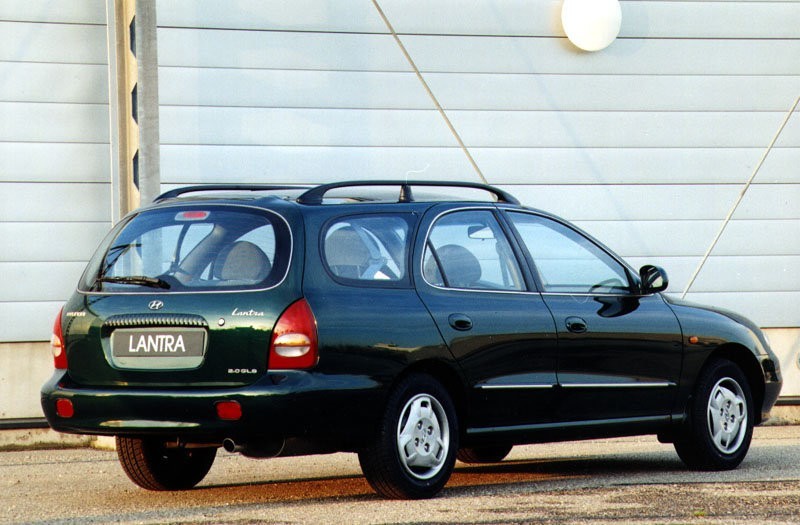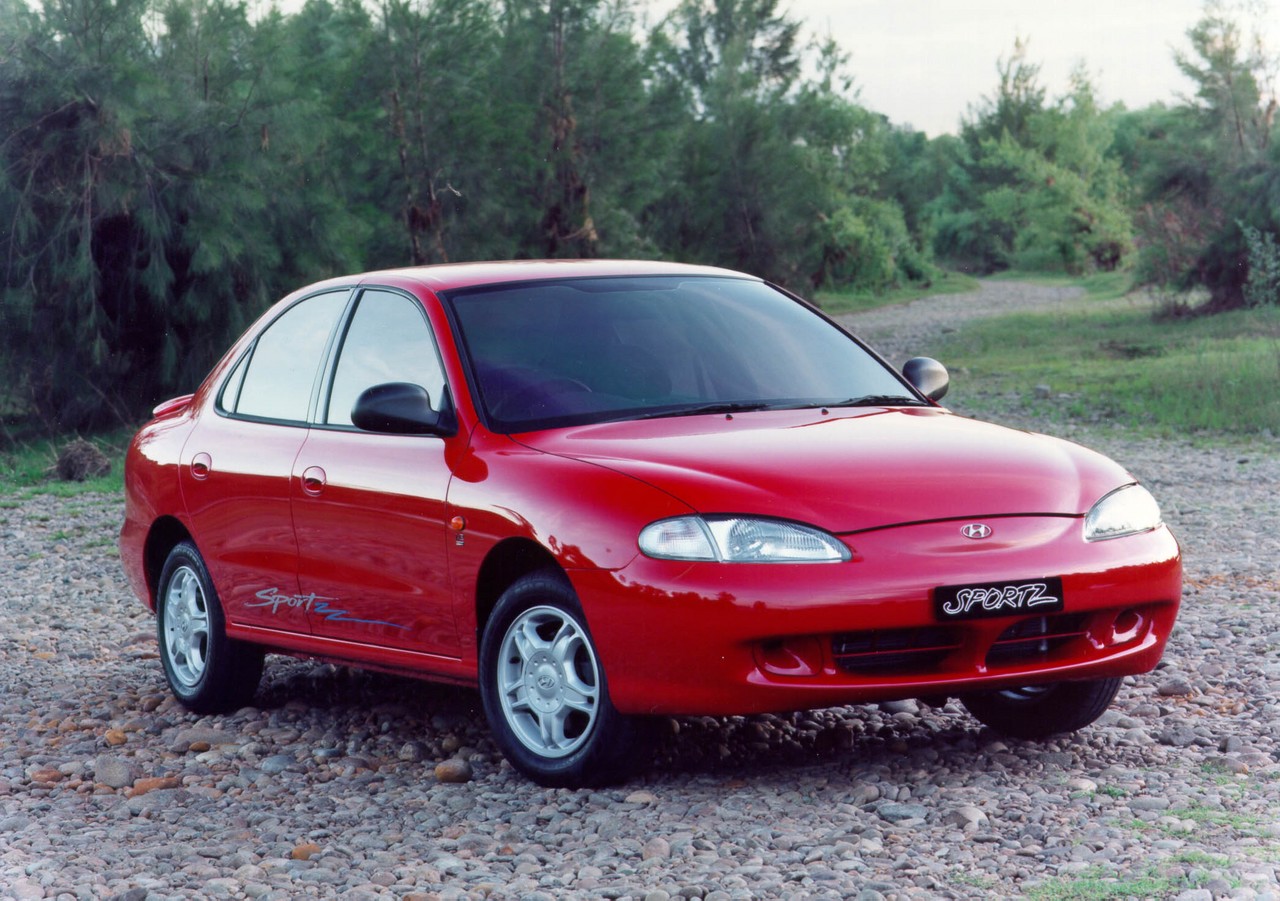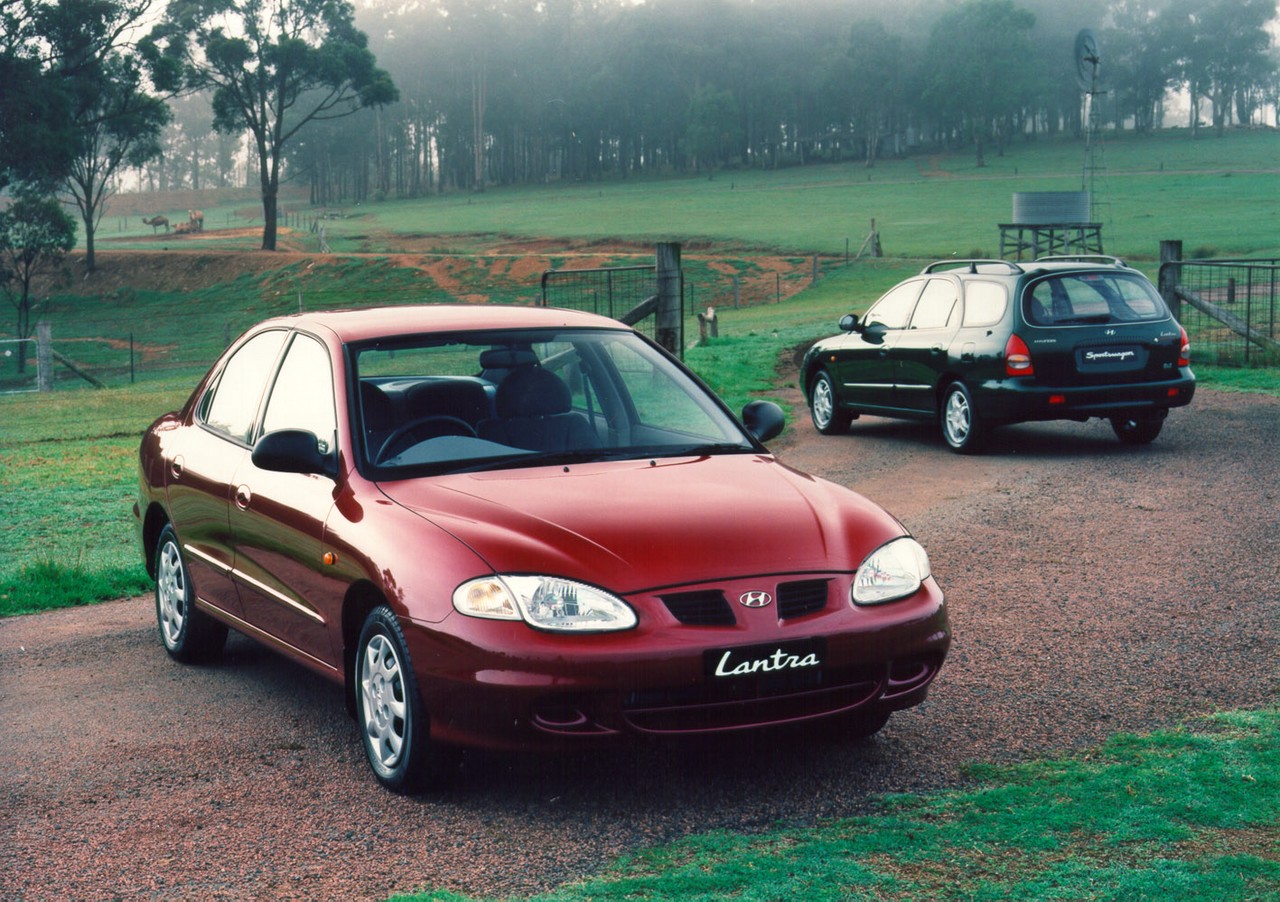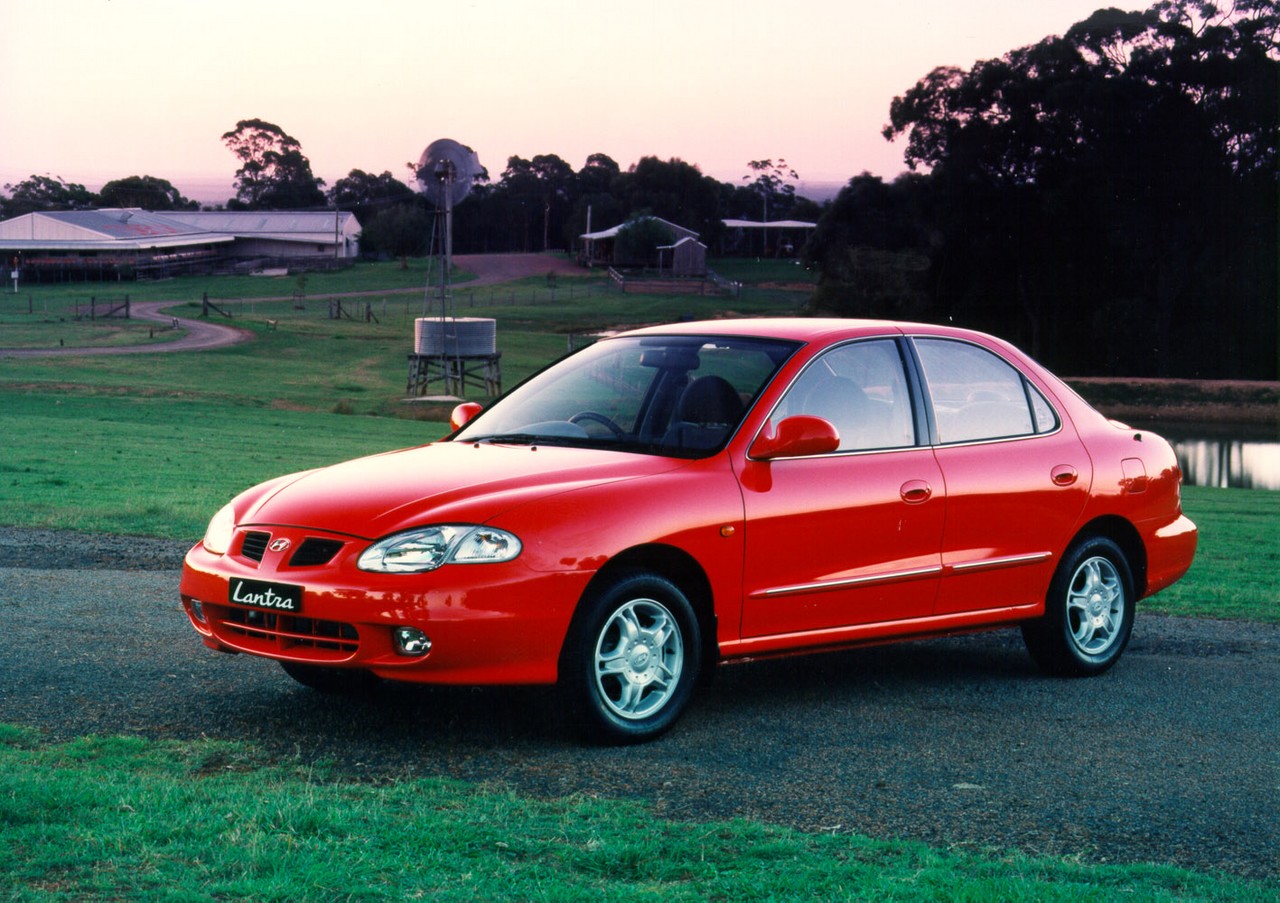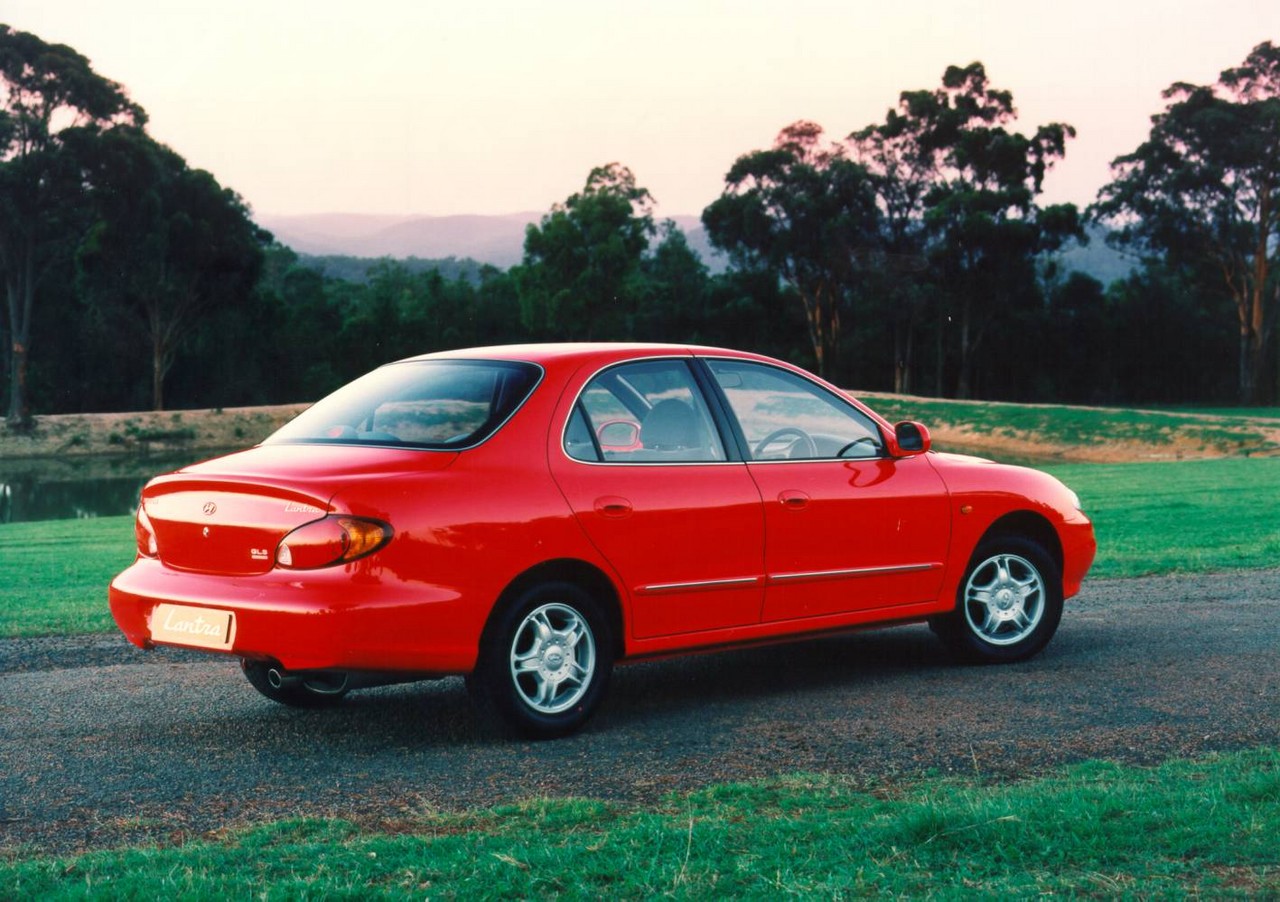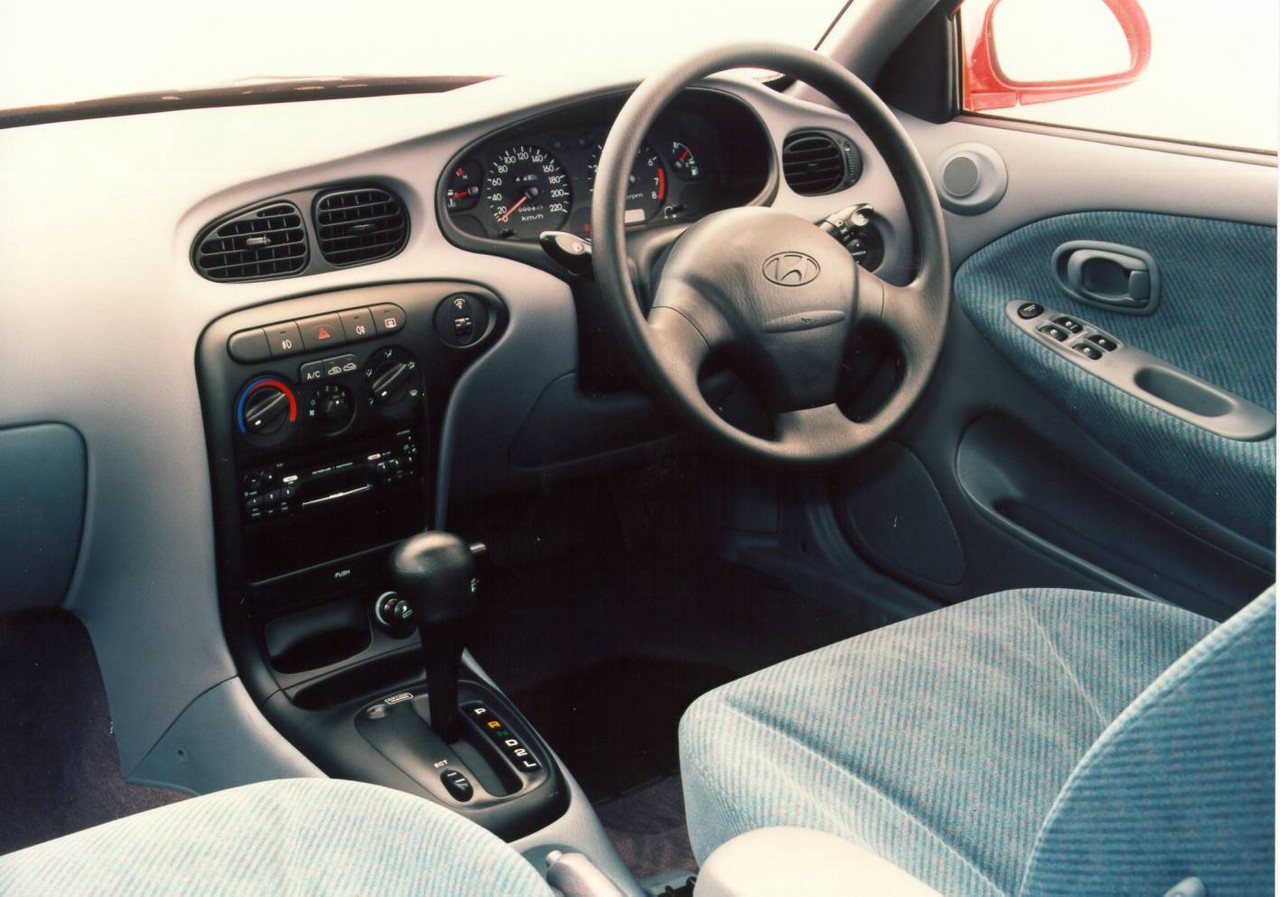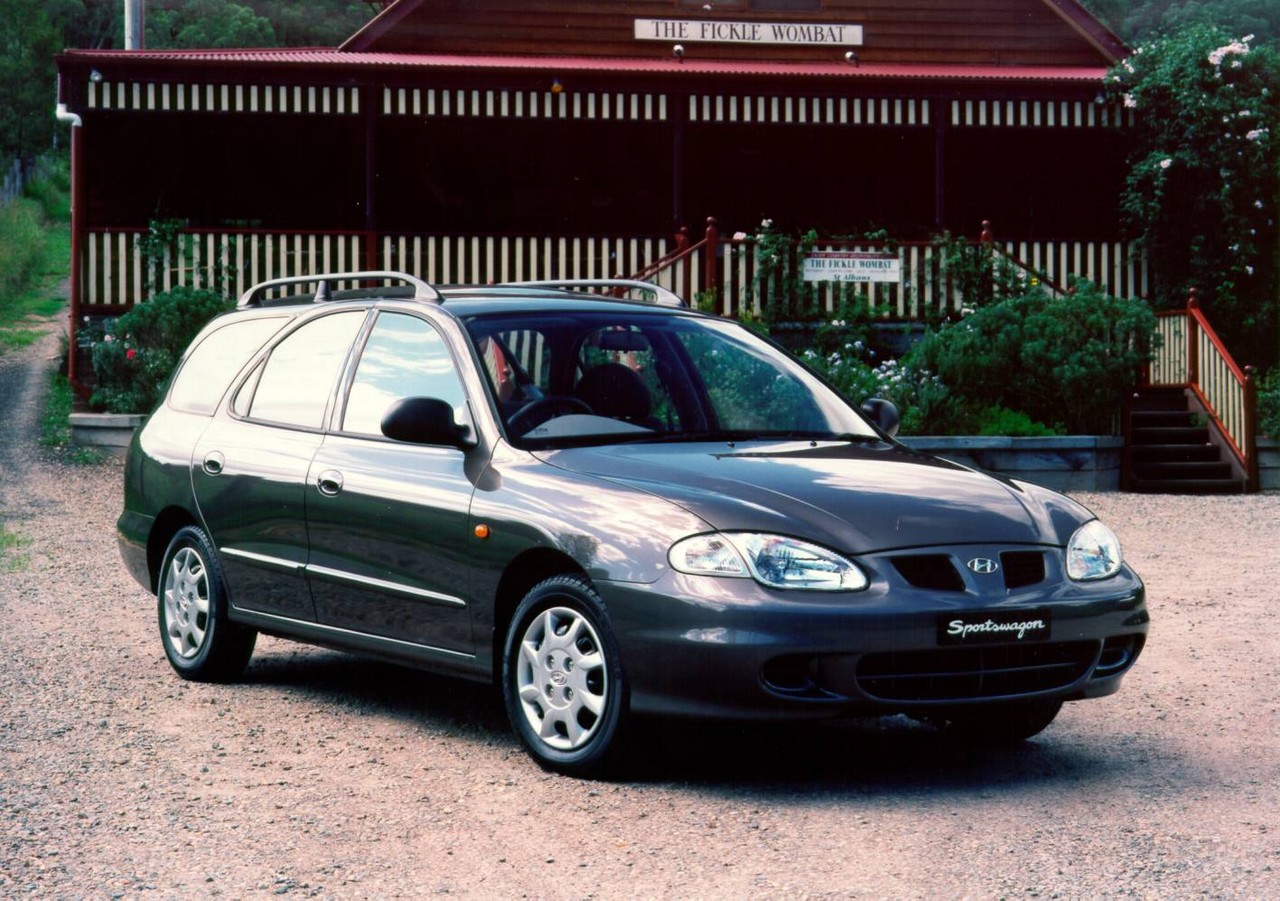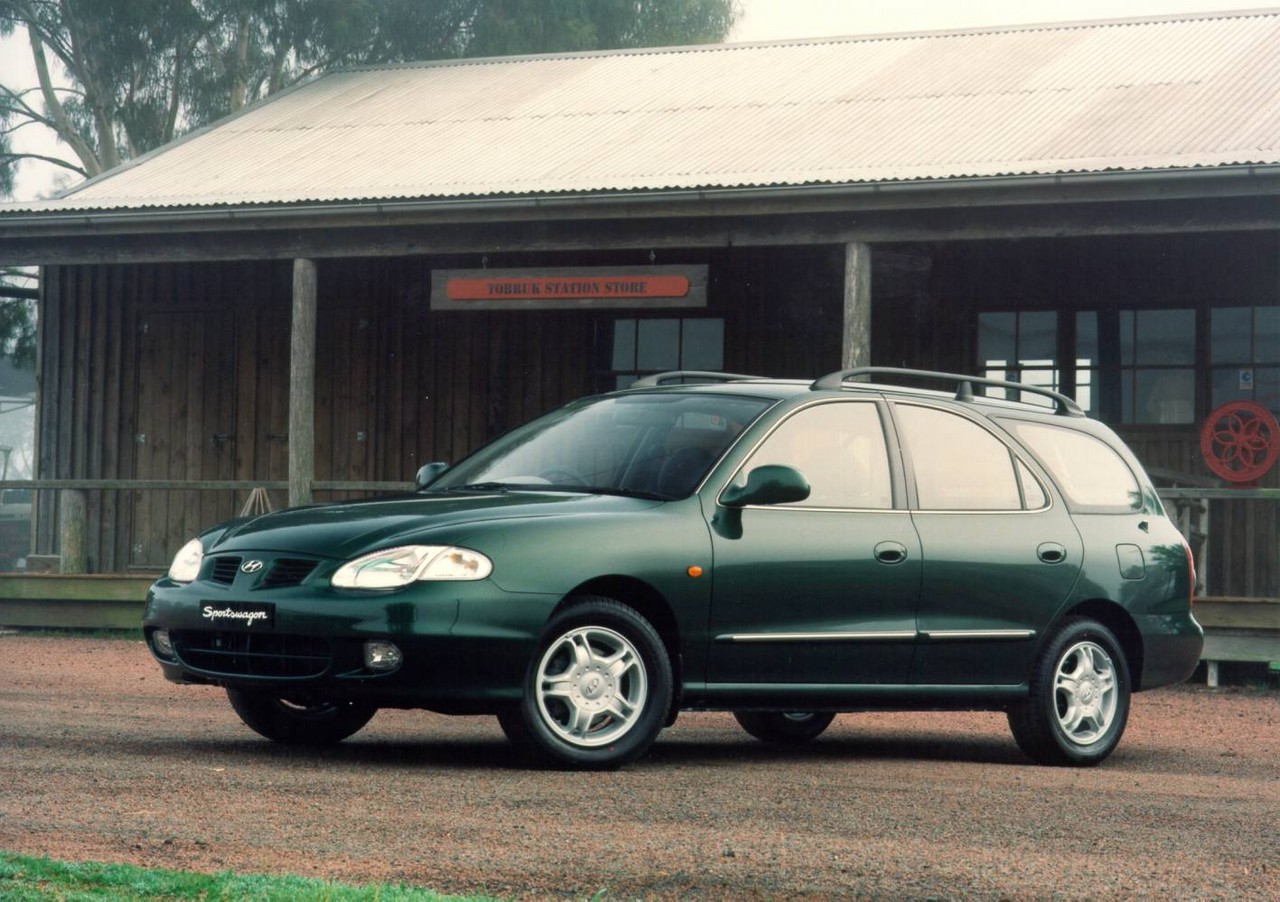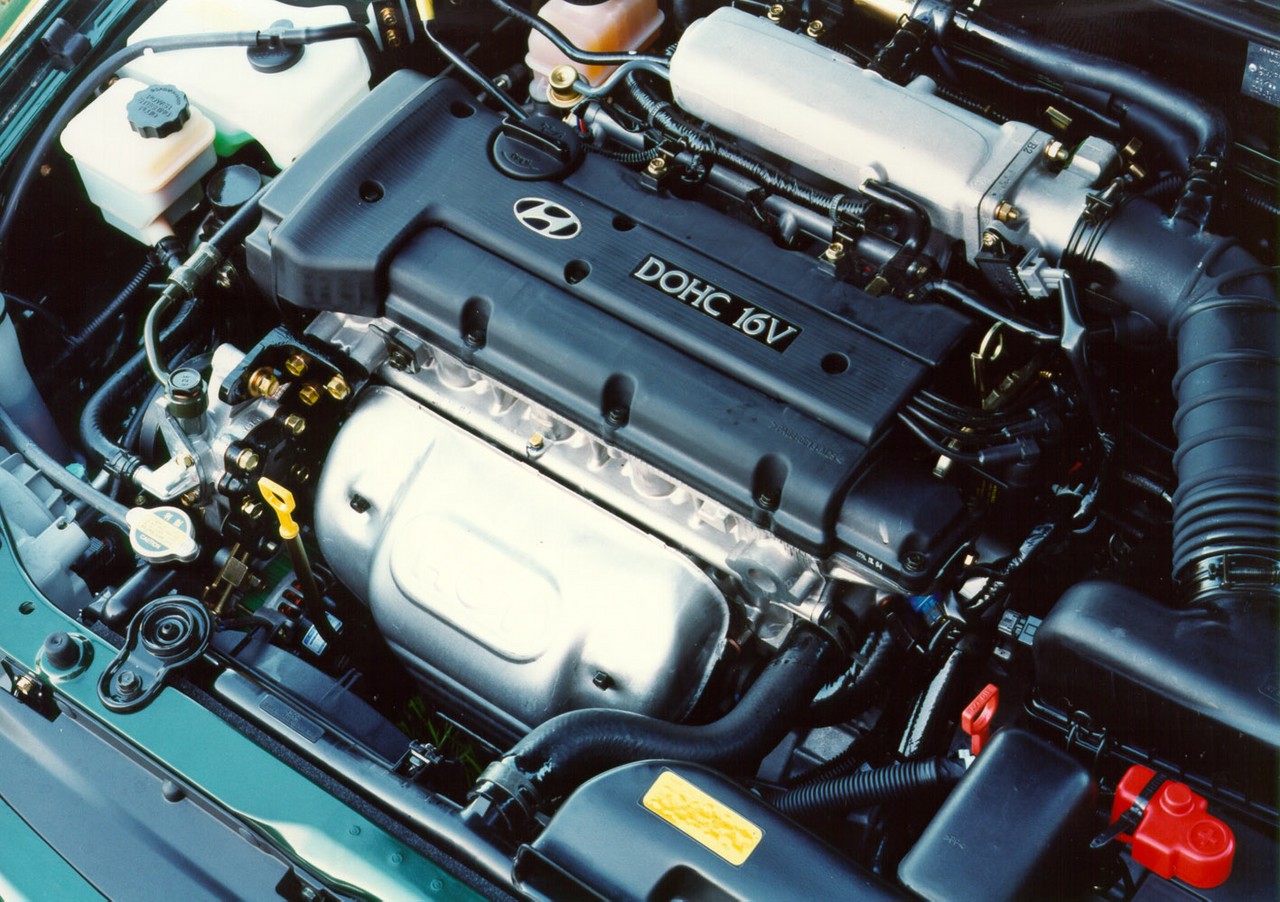
- Willing 2.0-litre petrol engine
- Safe and predictable handling
- Good leg room
- Generally comfortable ride…
- … though suspension lacks body control
- Vague steering
- 1.8-klitre engine lacks low-rev torque
- Notchy manual gear change
Review: Hyundai J2.I Lantra (1995-98)
Overview
Released in August 1995, the Hyundai J2 Series I (J2.I) Lantra was initially available as a small sedan, though wagon models followed in July 1996. Manufactured in Ulsan, Korea, the front-wheel drive J2.I Lantra was powered by a 1.8-litre four-cylinder petrol engine that was mated to either a four-speed automatic or five-speed manual transmissions. The Lantra range initially consisted of GL and GLS, but was subsequently expanded with an entry-level SE variant in July 1996. Limited-run Classique and Sportz variants were offered in October 1996 and November 1998, respectively.
The Lantra sedan was 4420 mm long, 1700 mm wide, 1393 mm tall and had a 2550 mm long wheelbase. The wagon models, however, were 30 mm longer (at 4450 mm) and 64 mm taller (1457 mm), though the other measurements were the same. The Lantra was fitted with MacPherson strut front suspension and dual-link rear suspension.
| Body | Variant | Years | Engine | Trans. | Peak power | Peak torque |
|---|---|---|---|---|---|---|
| Sedan | GL, GLS |
1995-98 | 1.8-litre petrol I4 | 5sp man., 4sp auto |
94 kW at 6100 rpm | 165 Nm at 5000 rpm |
| SE | 1996-98 | |||||
| Classique | 1996 | |||||
| Sportz | 1998 | |||||
| Wagon | GL, GLS, SE |
1996-98 | 1.8-litre petrol I4 | 5sp man., 4sp auto |
94 kW at 6100 rpm | 165 Nm at 5000 rpm |
| Sportz | 1998 |
Safety equipment
Within the Lantra range, safety equipment was limited to ABS for the GL and GLS variants.
Features
Standard features for the SE and GL included a four speaker sound system with a radio and cassette player, cloth/vinyl upholstery, 60/40 split and folding rear seats and an adjustable steering column.
The GLS was further equipped with 14-inch alloy wheels, cloth upholstery, central locking, power windows, power mirrors and height and lumbar adjustment for the driver’s seat.
From April 1997, air conditioning was fitted as standard across the range.
1996 Lantra Classique
In October 1996, a limited-run Classique variant was released. Available solely as a sedan and based on the GL, the Classique was further equipped with air conditioning; the Classique could also be identified by its chrome grille.
1998 Lantra Sportz
In November 1998, a limited-run Sportz variant was introduced. Compared to the SE, the Sportz added 14-inch alloy wheels, a CD player, air conditioning and a rear spoiler.
Review: Hyundai J2.II Lantra (1999-00)
Overview
Released in February 1999, the J2 Series II (J2.II) Lantra range consisted of SE and GLS variants, the latter of which was powered by a new 2.0-litre petrol engine. Visually, the J2.II Lantra could be identified by its new bonnet with ‘character lines’, split grille, new head- and tail-lights and a more rounded rear bumper.
| Body | Variant | Years | Engine | Trans. | Peak power | Peak torque |
|---|---|---|---|---|---|---|
| Sedan, wagon |
SE | 1999-00 | 1.8-litre petrol I4 | 5sp man., 4sp auto |
94 kW at 6100 rpm | 165 Nm at 5000 rpm |
| GLS | 1999-00 | 2.0-litre petrol I4 | 5sp man., 4sp auto |
101 kW at 6000 rpm | 180 Nm at 4800 rpm |
Safety equipment
Compared to its J2.I predecessor, ABS was omitted as a standard fitment for the GLS variant. As such, a driver’s airbag and ABS were only available as part of an extra-cost optional safety pack.
Features
Standard features for the Hyundai J2.II Lantra were extended to include a CD player, remote central locking, power windows and mirrors, a height adjustable driver’s seat and an immobiliser. The GLS also gained 14-inch alloy wheels and a six speaker sound system.
Related links
